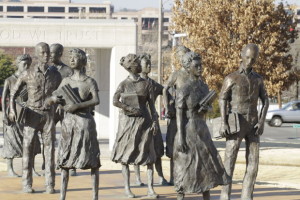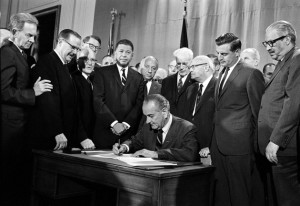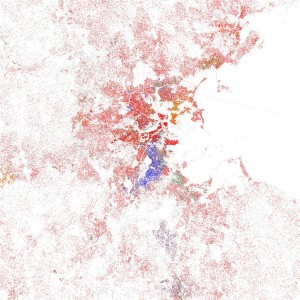I am sharing here in full an article about a U.S. Ninth Circuit Court of Appeals decision with significant fair housing and Affirmatively Furthering Fair Housing import for planning, zoning and permitting of residential housing development that was published April 28, 2016 in the legal issue blog site, “Manatt.” Especially check out the three basic “Practice Pointers” at the end of the article for the main take away.
— https://www.manatt.com/real-estate-and-land-use/Landmark-Discrimination-Case-Fair-Housing-Act-Thwarts.aspx —-
—————————————————-
Real Estate and Land Use
Apr 28, 2016
Landmark Discrimination Case: Fair Housing Act Thwarts NIMBYs
Avenue 6E Investments, LLC v. City of Yuma (March 25, 2016)
Author: Michael M. Berger
Why It Matters: The Ninth Circuit Court of Appeals reversed a decision in favor of the City of Yuma, Arizona, and concluded instead that there was sufficient evidence to present to a jury that the City had rejected the developer’s application for an increase in zoning density for reasons of barely disguised animus toward the expected residents of the new development. The Court held that issues of disparate treatment and disparate impact under both the 14th Amendment’s Equal Protection Clause and the federal Fair Housing Act needed to be tried.
Facts: The plaintiffs/developers acquired 42 acres of undeveloped land with the intent of building a “moderately priced” housing project. They are known in the area as a developer of Hispanic neighborhoods. Although the General Plan allowed for homes on either 6,000- or 8,000-square-foot lots, a prior owner had it zoned for 8,000-square-foot lots. Unfortunately, the economy would no longer support lots of that size and the developers sought a rezoning to the smaller size which in turn would allow increased density. The City had done some studies, concluding that its population was racially divided, with most of the low-to-moderate-income housing in the areas populated by Hispanics. These developers wanted to develop their housing on the border of a predominantly white area.
The City’s General Plan acknowledged that racial segregation is wrong and that large-lot zoning raises housing costs and impairs the ability of the City to provide housing for moderate-income buyers. The Planning Commission approved the rezoning to smaller lots and recommended that the City Council do so as well. The City Council, however, was besieged with NIMBY complaints and thinly veiled anti-Hispanic charges, complaining that these particular developers were known to “cater to” the people responsible for the vast majority of major crimes.
Two other facts had some import. First, there were similarly priced and modelled homes available elsewhere in Yuma, a fact that the City thought absolved it of any claims of disparate impact. Second, a fact that proved difficult for the City to impress on the Court was that, in the preceding three years, this was the only rezoning request that had been rejected out of 76 applications.
The developers filed suit under the federal Civil Rights Act, 42 U.S.C. § 1983, for violation of the Equal Protection guarantee, as well as for disparate impact and treatment under the Fair Housing Act. The trial court entered summary judgment for the City on the sole ground that the adequate supply of similar housing elsewhere in the City automatically foreclosed any finding of disparate impact.
The Decision: The Court of Appeals reversed. When the opinion began with a paean to the Fair Housing Act and the way it “strikes at the heart of the persistent racism that so deeply troubles our Nation,” something that the provision of more affordable housing can help to cure, it was apparent that the conclusion was foregone: judgment reversed.
The Court of Appeals was unable to disregard the bright light of the fact that out of 76 applications, the only time the City had denied a zone change in the past three years was this one. There could be no explanation for the denial other than racism, particularly in light of some of the communications made by neighbors to the City Council about the presumed criminal proclivities of the anticipated residents of the new development. Nor would the Court have anything to do with the trial court’s idea that the presence of similar developments elsewhere in Yuma obviated the problem. Indeed, it merely emphasized the fact that the City was racially divided and at least some of its residents wanted things to remain that way.
There appeared to be no principled opposition to the requested zone change. As the Court of Appeals put it, the record was replete with “code words” and “veiled references” for the Hispanic influx that the neighbors anticipated, turning the development into a “low-cost, high-crime neighborhood.” The case had no chance on appeal.
Practice Pointers:
- Neighbors frequently oppose projects in their neighborhoods that are intended to be occupied by lower-income families. Local governments often bow to this political pressure. This decision may well serve to justify these projects, even in the face of neighbor opposition.
- Language similar to the “code words” used by neighbors in this case is common among project opponents opposing higher-density projects. Local agencies need to be mindful of the exposure that this kind of language may impose if the projects are disapproved by the local agency.
- At the very least, local agencies need to include sufficient data and facts in the record to support their decision as not being based on discriminatory rhetoric.






